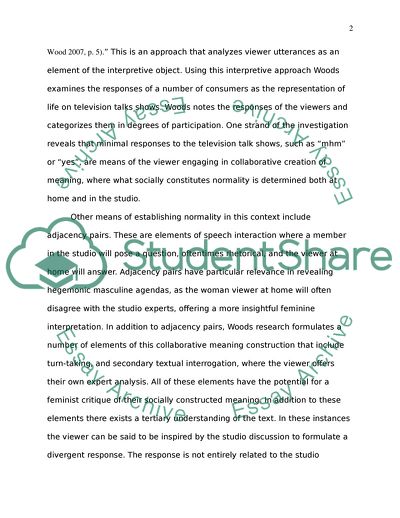Cite this document
(The Intersection of Normality and Consumerism on Television Case Study Example | Topics and Well Written Essays - 1250 words, n.d.)
The Intersection of Normality and Consumerism on Television Case Study Example | Topics and Well Written Essays - 1250 words. https://studentshare.org/media/1733542-how-does-the-representation-of-normality-or-of-normal-life-on-television-intersect-with-consumerism
The Intersection of Normality and Consumerism on Television Case Study Example | Topics and Well Written Essays - 1250 words. https://studentshare.org/media/1733542-how-does-the-representation-of-normality-or-of-normal-life-on-television-intersect-with-consumerism
(The Intersection of Normality and Consumerism on Television Case Study Example | Topics and Well Written Essays - 1250 Words)
The Intersection of Normality and Consumerism on Television Case Study Example | Topics and Well Written Essays - 1250 Words. https://studentshare.org/media/1733542-how-does-the-representation-of-normality-or-of-normal-life-on-television-intersect-with-consumerism.
The Intersection of Normality and Consumerism on Television Case Study Example | Topics and Well Written Essays - 1250 Words. https://studentshare.org/media/1733542-how-does-the-representation-of-normality-or-of-normal-life-on-television-intersect-with-consumerism.
“The Intersection of Normality and Consumerism on Television Case Study Example | Topics and Well Written Essays - 1250 Words”. https://studentshare.org/media/1733542-how-does-the-representation-of-normality-or-of-normal-life-on-television-intersect-with-consumerism.


